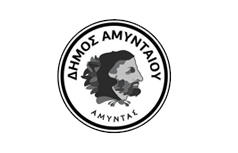Project title
Improving Human-Bear Coexistence Conditions in Municipality of Amyntaio
Acronym
LIFE AMYBEAR
Reference
LIFE15 NAT/GR/001108
Project time frame
01/10/2016 – 31/07/2020
Total project budget
1,521,156 €
EU financial contribution
1,140,116 €
Abstract
The LIFE AMYBEAR project deals with the recorded increase in the incidents of human and bear interaction in the areas of Amyntaio and Florina Municipalities. This "interaction" creates problems that have been known for many years, such as damages to rural economic activities (livestock farming, beekeeping, crops), as well as others that have been observed relatively recently at a remarkable intensity, such as the approach of bears to settlements or the increase of the number of road accidents involving bears. At the same time, besides negative ones, positive interactions have already been recognized, such as the development of specific forms of tourism around the Aetos – Nymphaion axis, which is mainly due to the existence of the Bear Sanctuary of Nymfaion in the area. The multiplication and diffusion of benefits in the wider area of the Municipality remains a demand as well as one of the main objectives of the project. In the above context, LIFE AMYBEAR seeks to implement management actions to improve the coexistence of man-bears in the region. The expected results include both the elimination or limitation to tolerable levels of negative interactions and the enhancement and diffusion of the socio-economic benefits and know-how associated with the presence and coexistence of the bear with humans in the area.
Background
The Brown bear (Ursus arctos) is listed in Annex II of the EU Habitats Directive. There are estimated to be at least 500 brown bears in Greece, of which around a quarter are found in the project area, the municipality of Amyntaio in the Western Macedonia region of north-west Greece.
This bear population is affected by bottleneck phenomena related to habitat disruption, – in particular, the recently constructed section of the Egnatia highway connecting the town of Florina to the border with the Former Yugoslav Republic of Macedonia. The construction of small-scale irrigation dams has further fragmented the forest and mountainous habitat of the target species.
One in every three brown bear deaths in the project area between 1996 and 2015 – or 20 bear deaths in total - has been attributed to human causes. Mortality rates of 7.8% in the project area are above the sustainable threshold of 4-6%. Bear-human conflicts relate to the damage caused by bears to agricultural production; bears becoming used to the presence of people and therefore losing their natural shyness; interference caused by legal or illegal hunting activities; and traffic fatalities due to the fragmentation of core bear habitat areas or population connectivity corridors.
The gender ratio of bears is also imbalanced due to the increased vulnerability of certain age classes, females with yearling cubs, dispersing young adults and vagrant adults. These factors may cause the collapse of the population’s demographic structure, low reproductive success, negative population trends and compromised population viability in the long term.
Furthermore, the brown bear is also threatened by the degradation and loss of its habitat through inappropriate forestry practices and transportation infrastructure. The presence of a flagship species for sustainable economic development is often overlooked and there is little local awareness of its conservation requirements.
Reference












